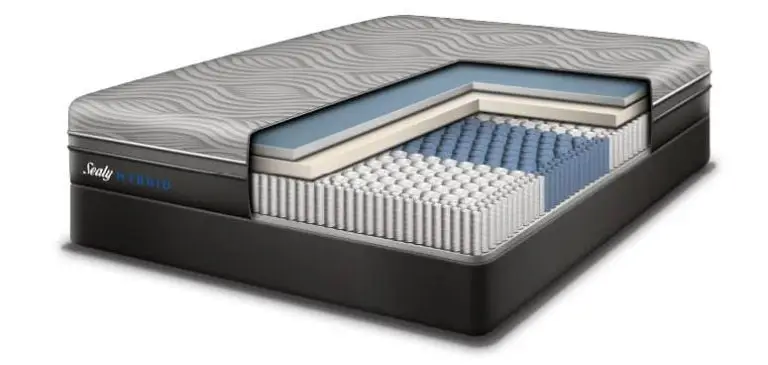Types of Mattresses
Types of Mattresses
There are several types of mattresses, each with different construction materials and benefits. The right mattress for you depends on factors like your preferred sleep position, comfort needs, and budget. Here’s an overview of the most common types:
Innerspring Mattress
- Construction: Made with a core of metal coils (springs) and a comfort layer of padding or foam on top.
- Benefits:
- Provides good support and bounce.
- Generally, more affordable.
- Well-suited for people who prefer a firmer feel.
- Best For: People who like a traditional mattress feel and need support for their back.

Memory Foam Mattress

- Construction: Made from viscoelastic foam that responds to heat and pressure to contour to your body.
- Benefits:
- Excellent for pressure relief and body contouring.
- Absorbs motion, so it’s a good choice for couples.
- Offers good support, especially for side sleepers.
- Best For: People who want a more “hugging” feel or suffer from joint pain.
Latex Mattress
- Construction: Made from natural or synthetic latex rubber. Natural latex is made from the sap of rubber trees, while synthetic latex is a man-made material.
- Benefits:
- Resilient and bouncy, providing firm support.
- Naturally hypoallergenic and resistant to dust mites and mold.
- Sleeps cooler than memory foam.
- Best For: Eco-conscious individuals, those who like a responsive, bouncy feel, or people with allergies.

Hybrid Mattress

- Construction: Combines innerspring coils with memory foam, latex, or other comfort layers.
- Benefits:
- Offers a balance of support from coils and comfort from foam or latex.
- Great for those who want the benefits of both innerspring and foam.
- Offers good motion isolation and support.
- Best For: People who want a mix of bounce and pressure relief, or those who sleep in multiple positions.
Airbed Mattress
- Construction: Uses air chambers as the core support, with adjustable firmness levels controlled by a pump or remote.
- Benefits:
- Adjustable firmness allows customization for different sleep preferences.
- Good for couples with differing comfort needs.
- Can be inflated or deflated to match personal preference.
- Best For: Couples or individuals who like to adjust their mattress firmness.

Pillow-Top Mattress

- Construction:Similar to innerspring mattresses but with an extra layer of padding or foam sewn into the top, often with memory foam or down-like materials.
- Benefits:
- Provides an extra plush or cushioned surface.
- More comfortable for those who prefer a softer feel.
Best For: People who like a soft, plush surface but still want the support of springs
Gel-Infused Memory Foam Mattress
- Construction: A variation of memory foam, with gel incorporated to help dissipate heat.
- Benefits:
- Offers the contouring support of memory foam but sleeps cooler.
- Helps with heat retention, which is common in traditional memory foam.
- Best For: People who like memory foam but tend to sleep hot.

Waterbed Mattress

- Construction: Uses water-filled chambers as the main support system.
- Benefits:
- Adjustable firmness by adding or removing water.
- Offers even support across the body.
- Good for people with back issues, as the water conforms to your shape.
- Best For: People who like to customize their firmness or those with specific back or joint pain.
Foam Mattress
- Construction: Made from various types of foam, including polyurethane foam and high-density foam.
- Benefits:
- Offers varying levels of firmness and comfort depending on the foam type.
- Provides good pressure relief and minimal motion transfer.
- Lightweight and affordable.
- Best For: People on a budget or those looking for a simple, supportive mattress.

How to Choose the Right Mattress
- Firmness: Consider your sleeping position. Side sleepers often prefer softer mattresses for pressure relief, while back and stomach sleepers may need firmer support.
- Material Sensitivity: If you have allergies or sensitivities, a latex or hypoallergenic mattress may be ideal.
- Temperature: If you sleep hot, look for cooling features, such as gel-infused foam or latex, or a hybrid design with breathable materials.
- Budget: Prices vary greatly, so set a budget that works for you while considering long-term durability and comfort.
Ultimately, the best mattress is one that meets your specific sleep needs for comfort, support, and durability!
Factors to Consider When Choosing a Mattress
- Firmness: The firmness of a mattress is subjective. It depends on personal preference and sleeping position:
- Side sleepers often prefer softer mattresses that relieve pressure on the shoulders and hips.
- Back and stomach sleepers may prefer firmer mattresses for proper spine alignment.
- Material:
- Memory foam is best for contouring and pressure relief but may trap heat.
- Innerspring is bouncier and more breathable but may not offer as much pressure relief.
- Latex is naturally cooling and offers more bounce, making it good for hot sleepers.
- Price: Determine your budget before choosing. Premium brands like Tempur can be quite expensive, while Wakefit and Peps offer more affordable options without sacrificing too much comfort.
- Durability: Brands like Serta, Tempur, and Duroflex are known for their long-lasting durability, while budget brands like Peps or Nilkamal may not last as long but offer good initial value.
Special Needs: If you have back or joint pain, orthopedic mattresses from brands like Sleepwell, Duroflex, and Florence may be more suitable, as they offer extra support
